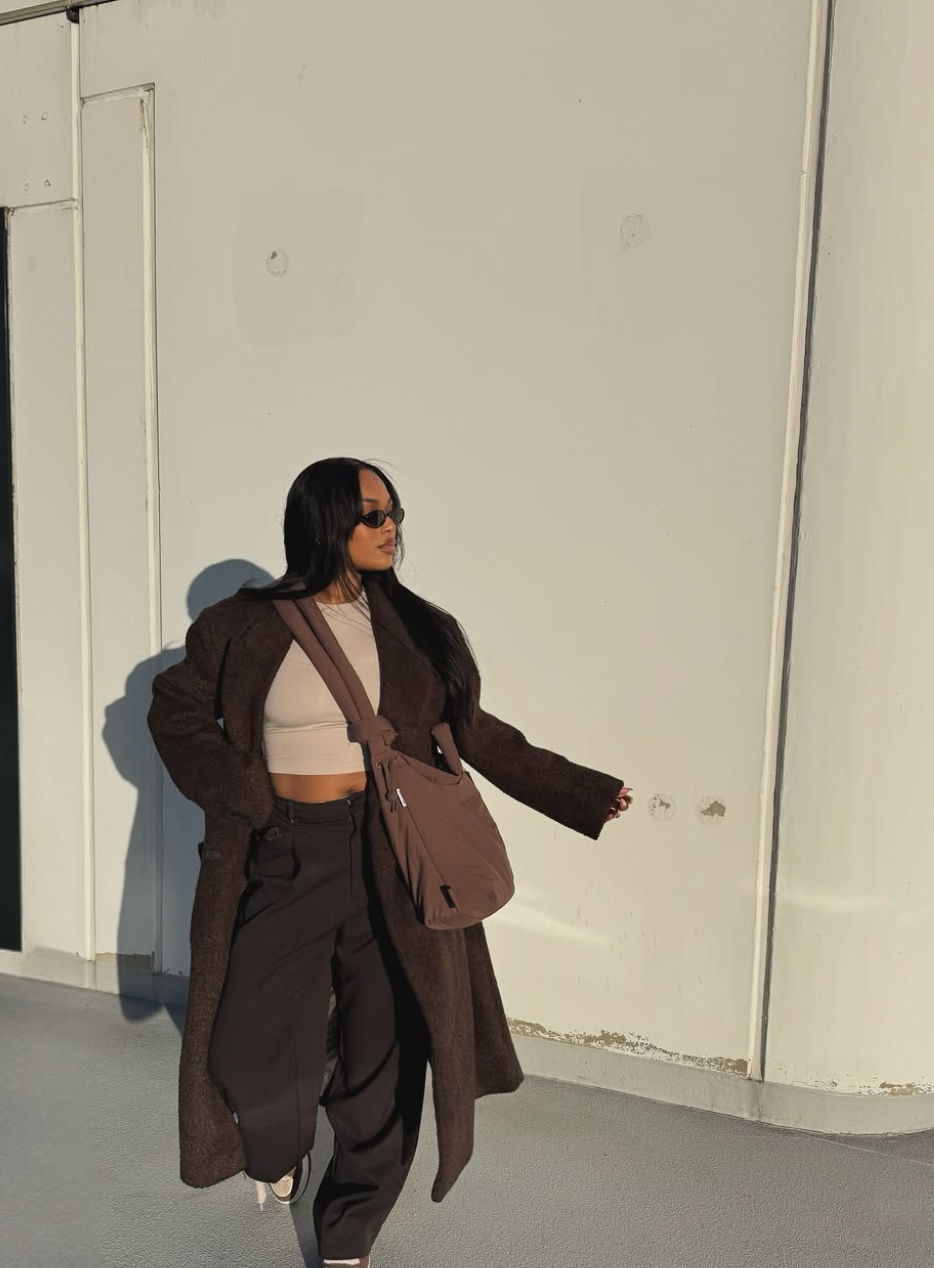How to Rebuild Your Wardrobe From Scratch (Without Copying Someone Else’s Style)
Photo Credit:naominyaraa
There’s a specific kind of frustration that hits when you realize your closet doesn’t work anymore. It’s not just that you “have nothing to wear”—it’s that everything you put on feels like it belongs to a different version of you.
Clothes that used to feel easy suddenly feel uncomfortable, out of place, or completely off. And the worst part? You don’t even know where to start.
Most blogs will tell you to find your personal style or learn your body shape. But what if you already know those things—and your wardrobe still feels wrong?
That’s where I was. And that’s where a lot of women find themselves after a major life shift. You wake up one day and realize: it’s time for a full wardrobe overhaul. Not a shopping spree. Not a Pinterest board. A complete reset that lines up with your life right now.
This guide is here to help you figure out how to do exactly that. Not from scratch in the “start over” sense—but in the clean slate, fresh perspective, do it your way sense. Because rebuilding your wardrobe isn’t about finding the perfect pieces. It’s about building a closet that fits who you are now—and where you’re going next.
Wondering what your fashion vibe really is? Get the free Fashion Persona Checklist!
Your Wardrobe Isn’t the Problem—Your Life Just Changed
It’s easy to think you’ve just “fallen off” with your style. But most of the time, your wardrobe stops working because something in your life shifted—and your clothes didn’t keep up.
Maybe you’re not going into the office anymore. Maybe you’re not in the same body you were last year. Maybe you used to dress for a lifestyle you’ve quietly outgrown. Or maybe your confidence has changed—for better or for worse—and now you’re looking at your closet like it belongs to someone else.
This happens more often than people talk about.
A wardrobe isn’t just a collection of clothes—it’s a reflection of your daily life. When that life changes—when you become a mom, leave a relationship, start a new career, or go through any kind of personal reset—it’s normal for your clothes to feel like they don’t fit anymore, even when they technically do.
So before you start over, stop and name what changed.
Analyze Your Lifestyle Before You Buy Anything
Forget color palettes and style vibes for a second. If you want to rebuild your wardrobe in a way that actually makes sense, you have to start with your life.
Clothes should match your routine—not just your aesthetic.
This is where the lifestyle method comes in. Instead of asking “what’s my style?”, ask: how do I spend most of my time? Because if your closet is full of outfits for the version of you that only shows up 10% of the week, it’s no wonder getting dressed feels hard.
Break Your Life Down Into Categories
Here’s a quick way to do it. Think in terms of percentages, not perfection:
Work: Office, meetings, calls, or working from home
Home: Cooking, cleaning, lounging, laundry
Errands & Life Admin: School drop-offs, grocery runs, appointments
Social: Brunch, dates, events, casual hangs
Active: Gym, walks, yoga, or chasing kids
Reset Days: Therapy, journaling, healing, catching your breath
Now look at those categories and ask:
Where am I underdressed? Where am I always scrambling for an outfit?
That’s where your wardrobe rebuild starts—not with a capsule checklist, but with clothes that match your real-life needs.
Set Your Style Goals—So You Don’t End Up Buying the Same Stuff Again
You know what your life looks like. Now it’s time to decide how you actually want to feel when you get dressed. Because a closet full of “practical” clothes doesn’t help if none of it makes you feel like yourself.
This is where style goals come in.
It’s not about figuring out your aesthetic. It’s not about picking a “core” or defining your look in one word. It’s about choosing how you want to show up—and using that as a filter before you bring anything new into your closet.
Try This: Finish the Sentence
“I want to feel _____ when I get dressed.”
“I want my clothes to help me _____.”
“I want to stop wearing things that make me feel _____.”
Now turn those answers into goals.
If your answer is:
“I want to feel confident but not overdressed.”
Then your style goal might be:
“Build a mix of casual pieces that still feel intentional.”
If your answer is:
“I want my clothes to help me get out of the house faster.”
Then your style goal might be:
“Create 5 outfit formulas I can repeat without overthinking.”
If you need more inspiration, check out my post on why you should take pictures of your outfit every day. It’s a powerful tool for tracking your style evolution and finding what truly resonates with you.
Lock In Your Daily Outfit Formulas
You don’t need a huge wardrobe—you need outfits that actually work. The kind you can throw on without second-guessing or trying on four other things first.
That’s where outfit formulas come in.
Think of them like your personal “uniforms”—repeatable combinations that match your lifestyle and help you feel put together without reinventing the wheel every morning.
Start with 3 to 5 formulas that reflect your everyday routine.
Find your style in 7 Quick Steps
The goal here isn’t to copy someone else’s aesthetic. It’s to build a handful of reliable looks that make sense for your life—so you don’t keep reaching for pieces that don’t work and wondering why getting dressed feels like a chore.
Once you’ve got your formulas, it becomes crystal clear what’s missing—and what’s just taking up space.
What To Read Next… How To Break Out Of A Style Slump
The Core 10 — What to Buy First
If you’ve done a full wardrobe reset before, you know how tempting it is to fill the gaps fast. But the goal here isn’t to “complete” your closet overnight. It’s to buy with purpose—based on your lifestyle, your style goals, and the outfits you actually wear.
This list isn’t a one-size-fits-all checklist. These are 10 starting points—pieces you’ll reach for often, feel good in, and can build multiple looks around.
1. The Bottom You’ll Reach for 3x a Week
Think: your “if all else fails” pants. Maybe that’s joggers, wide-leg jeans, linen trousers, or a pair of tailored leggings. Comfort is key.
2. The Layer That Pulls Everything Together
Could be a cropped jacket, a slouchy button-up, or a longline cardigan. You’ll want something that can instantly finish an outfit without making you overheat.
3. Your Everyday Top That Feels Like You Tried (But Didn’t)
Bodysuits, muscle tanks, slightly structured tees—something simple with shape, softness, or a detail that makes it feel styled.
4. The “Cute but Comfy” Dress or Jumpsuit
One piece. No overthinking. Throw it on and go. Look for one that works for casual days and events when you style it right.
5.An Elevated Basic That Works Harder Than It Looks
Something that fits into multiple formulas: a well-cut tank, a midi skirt, a button-down that can double as a layer.
6.Shoes That Make Sense for Your Life
If your week is 80% casual errands, don’t start with heels. Think white sneakers, platform sandals, easy slides—whatever feels right for now.
7. One “Self-Respect” Piece
A piece you put on when you want to remember who the hell you are. Maybe it’s a power blazer, a bold printed top, or a jacket that makes you stand straighter.
8. A Matching Set or Outfit You Can Put On With Zero Thought
Co-ords, lounge sets, or a head-to-toe outfit that doesn’t require styling but looks good every time.
9. Something That Feels Like the Future You
A little aspirational is okay—just make sure it’s still wearable. This might be a pair of statement boots or a bag that makes every outfit feel finished.
10.Something Fun, Just Because
You don’t need to justify every piece. If it makes you smile and it fits your life, it belongs in your wardrobe—even if it’s “just” a printed top or colorful earrings.
Read This Next… How To Create a Style Uniform
What to Let Go Of
If you’re rebuilding your wardrobe, what you keep matters just as much as what you buy next. And for most people, the closet clutter isn’t just physical—it’s emotional. That’s why this part of the process can feel harder than shopping.
Let’s name the real stuff you might need to let go of:
Clothes that belong to a version of you that no longer exists. Maybe they fit your lifestyle five years ago. Maybe they fit your body two sizes ago. Either way, you’re allowed to release them. Keeping them out of guilt isn’t the same as honoring your past.
Trends you bought because they were “in,” not because they were you. We’ve all done it. The loud piece you wore once. The microtrend that didn’t translate. Let it go.
Pieces that never made you feel like yourself. Even if they were expensive. Even if someone said it looked good on you. If you never wanted to reach for it, it’s just taking up space.
Clothes that make you feel small—emotionally, mentally, or physically. Maybe you’ve been holding onto the jeans you “used to fit.” Or the outfit that reminds you of a season you’ve outgrown. You don’t owe your closet anything. If it doesn’t serve who you’re becoming, it can go.
Letting go clears space. Not just for new clothes, but for a new relationship with your style—one that’s based on reality, not pressure.
Rebuilding your wardrobe isn’t just about getting new clothes—it’s about breaking old habits.
You don’t need to buy more. You need to buy better. And that starts with a new filter for every purchase going forward. Not the aesthetic filter. Not the “this is on sale” filter. The does this work for my life and my style goals filter.
Start asking yourself different questions before you click add to cart:
Does this fit into one of my outfit formulas?
Can I wear this three different ways with what I already own?
Will I actually reach for this next week—or am I just craving something new?
Give yourself permission to shop slower. To repeat outfits. To have favorites and wear them often. The goal isn’t to never shop again. It’s to stop shopping from stress, boredom, or the pressure to keep up with someone else’s life.
You can still love fashion. You can still play with trends. But now you’re doing it with clarity.
If you want to go deeper, this is also where things like a cost-per-wear tracker or intentional wardrobe planning can help you stay focused without falling into the “nothing to wear” trap all over again.
Your next closet doesn’t have to be perfect. It just has to make sense for who you are now.







